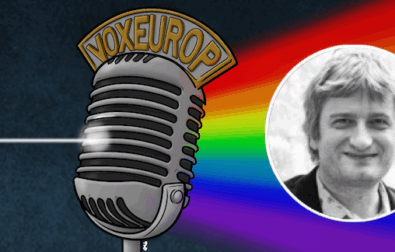On 3 July a shooting took place in a pizzeria on Paseo de Delicias, in the heart of Madrid, during a dispute between gangs. Police arrested a minor, but did not find the sawed-off shotgun that was used in the shooting. There are an estimated 35 million illegal firearms circulating in the European Union, more than half (56%) of the total number of civilian firearms estimated by the European Commission to exist in Europe. In addition, some 630,000 firearms are listed as stolen or lost in the Schengen Information System.
In March 2024, the European Parliament and the Council of Europe reached an agreement to update the EU regulation on the import, export and transit of civilian firearms, including shotguns and handguns, with the aim of making their circulation more transparent and easier to trace within the European Union. The new regulation, which is an update of existing legislation, was adopted in April and will be reviewed later on.
This is because the agreement with the Council was reached just before the election period, an official source told El Confidencial. After approval, it will be published in the Official Journal and enter into force. One of the new features of the regulation is that it will establish an EU-wide electronic licensing system (ELS) for manufacturers and distributors that will replace the national systems, which in many cases are still paper-based.
This will be a secure, encrypted licensing system for authorisations, records, information and decisions on the import and export of weapons for civilian use. The Commission must establish the electronic licensing system within two years, i.e. by 2026, and member states will have four years – until 2028 – to either adopt such an electronic system or integrate their national digital systems into the ELS.
Electronic licences to prevent “country-hopping”
The Commission will also produce an annual public report based on member states' data on the import and export of firearms for civilian use, providing clearer information on which weapons are entering and leaving the EU market or the reasons for their rejection. "With today’s agreement, we will not only have for the first time the EU’s harmonised rules for imports, but thanks to the European Parliament’s determination, we have also succeeded in retaining strong rules for exports," said Bernd Lange, chairman of the European Parliament's Committee on International Trade (INTA). Lange believes that modernising the rules will help to stop the phenomenon of "country-hopping", where arms are moved to states with weaker laws.
"Getting a gun legally in Europe may be hard, but terrorists have little trouble," read a Washington Post headline back in February 2015, after the attacks on a Copenhagen shopping centre, the offices of the Charlie Hebdo magazine in Paris, and the Bataclan nightclub. For the latter attack, the terrorists acquired an arsenal of weapons, including AK-47 assault rifles and Zastava M-70 rifles, pistols, submachine guns and grenade launchers, which are believed to have been purchased in Belgium. Paradoxically, the city of Brussels is both the seat of law and order and a major hotspot for illegal arms trafficking.
"Is Belgium Europe's favourite gun shop?", asked a BBC headline, referring to the fact that Belgium has become a hotspot for arms trafficking, due to its location in the heart of the continent, with major ports such as Antwerp, and a long history as an exporter. Many of the illegal weapons originate from the Western Balkans, where, after the wars of the 1990s, thousands of military weapons were left in the hands of citizens. These weapons have entered Western Europe in small quantities and move easily through the Schengen area. As the Flemish Peace Institute (from the Flemish parliament independent research institute) explains, the abolition of internal border controls within the EU since the late 1980s diminished the ability to control firearm transfers.
Czech Republic vs Romania, two opposing cases for the possession of firearms
Despite the existence of the EU Firearms Directive, which defines common minimum standards for the acquisition and possession of firearms in the EU, as well as the transfer of weapons from one European country to another, laws on the acquisition and possession of weapons vary across Europe.
This EU directive replaced a directive from 2017, when the legal acquisition of the most dangerous weapons, such as automatic firearms converted to semi-automatic, semi-automatic firearms with high-capacity magazines, or folding or telescopic magazines, was tightened in the wake of the 2015 Paris attacks. One of the most recent mass shootings on European soil took place four days before Christmas at the Faculty of Arts building in Charles University in Prague, Czech Republic. The perpetrator was a 24-year-old student, who killed his father before killing 14 people at the university.
The Czech Republic has some of the most permissive gun laws in the EU. It is one of the few countries in the world, along with the USA, Mexico and Guatemala, that directly regulates the right to own firearms in its constitution. Although an application to own a firearm must be approved by a doctor, the attacker in this case managed to legally acquire his weapons despite having a history of psychiatric problems. The Czech parliament was prompted by the shooting to pass an amendment that tightened its legislation. At the opposite pole is Romania, with the strictest gun legislation in Europe, requiring a medical and psychological examination, completion of a theoretical and practical training course, and possession of the appropriate permits for use.
There are no studies that show a statistical correlation between legal access to firearms and a country's firearm homicide rate, explains Katharina Krüsselmann, a researcher in Gun Violence, Homicide and Open Science at Leiden University in the Netherlands. Speaking with El Confidencial, Krüsselmann said that "some studies have been done on this topic, but the results differ". What matters is whether citizens make use of this right, and the effectiveness of regulations for access: "training, for example, or controls on safe storage", Krüsselmann explains.
The researcher says that the Czech Republic is an excellent example: "They have this right enshrined in the constitution, but the rate of homicide by firearm is one of the lowest in Europe. So, having the right to access firearms in the constitution is no guarantee of high levels of (lethal) violence. What matters is whether citizens make use of this right, and how well the access to firearms is regulated (think training, police checks on safe storage, etc.)".
Despite the attention-grabbing nature of mass shootings, deaths by firearms in Europe are rare and tend to occur in the domestic sphere, in many cases with legally acquired weapons. According to figures from the Flemish Peace Institute, in 2015, the year of the Paris attacks, around 5,000 of the nearly 7,000 gun fatalities in the EU were suicides (75%), followed by 1,000 homicides (15%) and 700 unspecified deaths or accidents.
Due to the lethality of firearms, legal access, specifically in households, "is associated with an increased risk of suicide," Krüsselmann explains. The same is true for murders of women, she says. This is because "female homicides often occur in the domestic context, where heated conflicts, sometimes under the influence of alcohol and drugs, turn violent." In such situations, "having access to firearms means having access to an incredibly lethal weapon."
👉 Original article on El Confidencial
This article was produced within PULSE project, a European initiative supporting cross-border journalistic collaborations. György Folk (EUrologus. Hungary), David Chytil (Deník Referendum, Czech Republic), Sebastian Pricop (Hotnews, Romania) have contributed to this aricle. Data: Ana Somavilla
Do you like our work?
Help multilingual European journalism to thrive, without ads or paywalls. Your one-off or regular support will keep our newsroom independent. Thank you!












